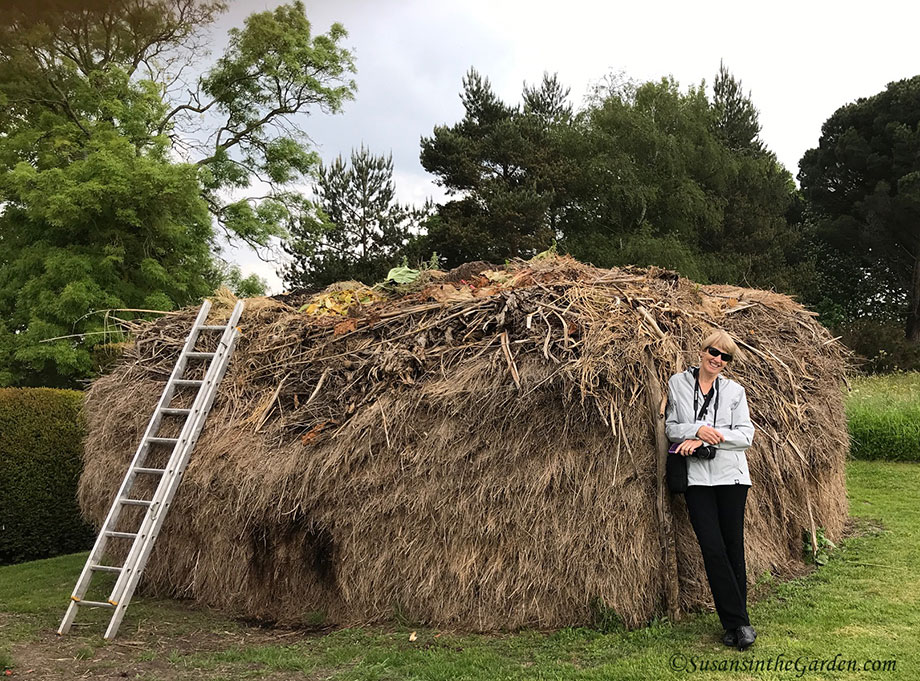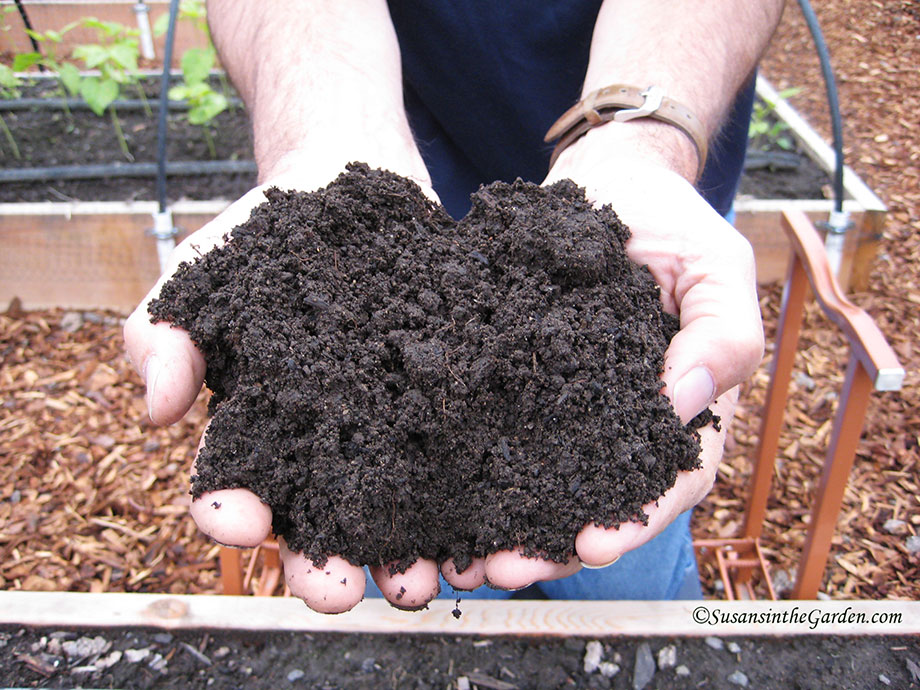Composting Guide

You’ve probably heard the expression, “if you feed your soil, it will feed your plants.” This is so true! And yet, our soil’s health and fertility are often overlooked.
You don’t need anything fancy to improve your soil, just some lovely organic compost. While you can purchase some from garden centers, I think it’s much easier, more efficient, and more environmentally-friendly to make your own.
If you’ve looked into making compost in the past, you probably felt overwhelmed by the carbon-to-nitrogen (C:N) ratio. The first time I ever heard of it, I got so confused! Fortunately, there’s an easier way to build a compost pile and still end up with the same results. My goal is to simplify the process for you and encourage you to give it a try.
Here is an overview of the composting process:
To make your own compost, you need to combine two general types of materials – brown and green. Brown materials contain carbon while green materials contain nitrogen. Instead of worrying about the C:N ratio, you can use a much simpler formula of 2 parts brown materials to 1 part green.
Examples of brown materials include things like the leaves that dry up and fall from our trees in the autumn, dead plants, straw and shredded newspapers. When it comes to green materials, think of living plant material, kitchen scraps, and grass clippings – provided you don’t treat your lawn with herbicides.
If you build your pile with twice as many brown materials as green materials, you will end up with excellent compost! The interesting thing about those brown materials is that they will foster a compost that more dominant with fungi, which is more beneficial to our soil. If the mention of fungi alarms you, rest assured that it exactly what our soil needs, especially mycorrhizal fungi which benefits the roots of our plants in so many ways.
NOTE: The smaller you chop up the materials when adding them to the pile, the more quickly they will break down.
In addition to the browns and the greens, there are two other essential factors for compost, moisture and air. Both help with decomposition. Microorganisms and other small creatures need air in order to survive and break down the materials.
Let’s take a look at the types of materials that are ideal for adding to a compost pile:
For brown materials (sources of carbon), use dried leaves, small branches, dead plant material, eggshells, shredded newspaper or regular paper, and corrugated cardboard.
Green materials (sources of nitrogen) include grass clippings from a lawn that hasn’t been treated with herbicides, coffee grounds, kitchen scraps such as vegetable and fruit peelings, live plant material, and droppings from rabbits and chickens.
Some items should not be added to a compost pile: Meat, poultry, or fish; cheese and other dairy products; cooking oils; noxious weeds; or plants infected with disease. If you’re wondering why meats, dairy products, and oils should not be included, that’s because they will attract various types of critters such as rodents. I don’t recommend adding cattle or horse manure because they might contain persistent herbicides which will contaminate your soil and adversely affect your plants.
And one more thing: Don’t add manure from carnivorous animals because it will contain pathogens. This is so important!
To build your compost pile, layer your green and brown materials. Try not to make the pile larger than 3 feet by 3 feet, or it will be difficult to tend to and take longer to break down.
If you’d prefer to use a closed composting system, there are a lot of options available from online sources. They are designed to be easy to turn – usually by cranking a handle – and they’re a good option, especially if you are concerned about visits from rodents and other types of critters.
My favorite thing to do while the compost pile is “cooking” is to monitor its temperature. We have a compost thermometer and you would be amazed at the temperature fluctuations the pile goes through. All of this is a reflection of the activity of the various microorganisms as they break down the materials.
During the process, there’s a chance you might notice a funky odor coming from the pile. This will occur if you either add too many green materials or you have gotten the pile too wet. If this happens, turn the pile and don’t water it for a while until the situation resolves.
There are two methods of composting, which are referred to as hot or cold composting. With the hot method, you will need to turn the pile on a regular basis (usually once a week) and occasionally add a bit of water if the pile is dry. The contents of the pile should contain the small amount of moisture as you’d expect to feel in a wrung-out sponge. Cold composting is a hands-off approach where you build the pile and let it slowly decompose with no additional help on your part; unfortunately, it takes a lot longer to produce a finished compost (about a year or two). It’s all a matter of how much time you want to devote to the compost pile and how quickly you want results.
Finished compost will be light and crumbly, it will smell good, and you won’t be able to recognize any of the original materials that you started out with.
How much compost should you add to your garden? I like to place an inch or two on the surface of the soil in each of my raised beds in early spring and early fall. It isn’t necessary to turn it into the soil because the nutrients will move down into the soil all by themselves.
Making your own compost isn’t difficult and it makes such a great organic amendment!

